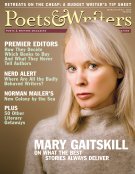My confusion came from a curious warning. Awash in a sea of writers and would-be writers in a drab-walled meeting room at the Association of Writers & Writing Programs Conference a few years ago in Vancouver, B.C., I was listening to author Dinty W. Moore extol the virtues of creative nonfiction writing when suddenly he straightened his stout body and leaned across the podium.
What distinguishes these New New Journalists from the old New Journalists is a greater awareness of all the ways a story can be reported and the firm belief that any idea can lead to an authentic story if the research is done well.
"Look out," he cautioned, his tone dire, "the journalists are coming!"
I didn't know what he meant—why he might see journalists as adversaries rather than kin of creative nonfiction writers—but I couldn't ask because he kept on talking, telling the crowd about his online magazine, Brevity, where "form is more important than content" and nonfiction comes in all kinds of forms, "even verse."
More baffled than before, I waited impatiently for the question-and-answer period and then raised my hand. "Nonfiction in verse," I said. "Isn't that poetry?"
Moore just frowned and lifted his chin. "We don't want to limit ourselves," he said, "with expectations and categories."
He may have meant only that his magazine prefers unusual approaches to form that bring new meaning to subject matter, rejecting strict definitions of what nonfiction writing can be, but his fuzzing of lines and devaluing of content made me uneasy. I couldn't help thinking that his warning about "journalists" had something to do with the success many self-described journalists (such as Susan Orlean or Jon Krakauer) have had in recent years, weaving compelling stories from solid reporting. Instead of choosing form over content or worrying about making art, they've concentrated on doing their research well and staying true to what they've discovered. The result has been greater trust in, and growing readership for, the kind of creative nonfiction that is reported rather than remembered or constructed—the kind that is focused on facts first and creativity second while seeking to balance the two.
Although he's attained his own reputation as a creative nonfiction apostle, Moore was originally a disciple of the man credited with coining the term creative nonfiction, Lee Gutkind, who taught a class with those words in its title at the University of Pittsburgh as early as 1973. I don't know if Gutkind defined the term in that original syllabus, but he's been explaining and refining it in prose and in person ever since, focusing primarily on the "creative" rather than the "nonfiction" component.
In a piece that appeared in 2001, "Becoming the Godfather of Creative Nonfiction," Gutkind defines it this way: "writing nonfiction using literary techniques like scene, dialogue, description, while allowing the personal point of view and voice (reflection) rather than maintaining the sham of objectivity."








